
DIY Trailer: Explore Our Flat Pack Suspension Kits
Essential Trailer Suspension Kits for Safe Hauling
Embarking on a journey with a trailer in tow is like setting sail on the open sea; without the right equipment, one may find themselves adrift amidst waves of uncertainty and peril.
The spine of this maritime voyage?
The trailer suspension kit, a vital component ensuring your cargo’s safety and your vehicle’s integrity.
This unsung hero, from tandem axle trailer kits designed for hefty loads to the more specialized boat trailer suspension kits, demands both understanding and respect.
Whether you’re a seasoned mariner of the roads or a novice looking to embark on your first DIY trailer build, mastering the intricacies of trailer suspension is key.
Keep reading to navigate the vast ocean of trailer suspension kits, ensuring a smooth and safe journey every time you hit the road.
Key Takeaways
- Understanding Your Trailer’s Load Capacity and Intended Usage Is Critical in Selecting the Appropriate Suspension System
- Comparing Leaf Spring Systems Against Air Ride Suspensions Is Essential for Determining the Best Safety and Efficiency Outcome for Your Trailer
- Familiarizing With the Components of Trailer Suspension Kits Is Vital for Efficient and Safe Travels
- Regular Maintenance and the Choice of High-Quality Replacement Parts Are Key for the Longevity and Reliability of the Trailer Suspension System
- Proactive Measures Like Regular Inspections and Timely Component Replacement Safeguard the Trailer’s Performance and Safety on the Road
Choosing the Right Type of Suspension for Your Trailer

Embarking on the journey to find the perfect suspension system for your trailer can feel like navigating through a dense forest, with each path offering different rewards and challenges.
Understanding the spine of our trailers – their backbone if you will – begins with a deep dive into two crucial factors: identifying your trailer’s load capacity and its intended usage.
Whether we’re talking about the robustness required by heavy-duty trailer axle kits or the flexibility afforded by boat trailer suspension kits, each decision sets the stage for how well your trailer will carry its burden.
We’ll then segue into comparing the resilience of leaf spring systems against the adaptability of air ride suspensions.
Like a painter choosing between brushes, this decision greatly influences the masterpiece of safety and efficiency we aim to achieve on the open road.
Identify Your Trailer’s Load Capacity and Usage
Peering into the heart of my trailer’s capability, understanding its load capacity emerges as the cornerstone of safe travel. This isn’t just about knowing how much my trailer can handle; it’s about respecting the limits set by its design, ensuring every journey remains a tale of reliability and endurance.
The purpose for which my trailer is destined plays a pivotal role in selecting the appropriate suspension system. Whether it’s for the serene odyssey of a boat to the lake using a boat trailer suspension kit or the rigorous demands of a construction site needing the steadfast support of heavy-duty trailer axle kits, aligning usage with capacity ensures harmonious functionality.
Explore Leaf Spring vs. Air Ride Suspension Systems
My voyage into the realm of trailer suspensions first guides me to the shores of leaf spring systems, a steadfast ally for the majority of my towing adventures. These guardian titans, composed of several layers of metal, are the embodiment of durability, offering a predictably smooth sail across the byways of Australia. Their simple, yet effective design stands as a testament to time, a beacon for those who prioritize reliability over the whispers of innovation.
Conversely, the air ride suspension whispers to me a different tale—one of modern triumphs and adaptable spirits. With the grace of a ballet dancer, this system adjusts to the weight it bears, ensuring a level of comfort and stability akin to traversing Australia’s landscapes on a cushion of air. Ideal for those who frequently embark on journeys with variable loads, the air ride suspension casts a spell of protection over cargo, offering a gala of convenience and sophistication on the unpredictable roads ahead.
Navigating the world of trailer suspensions is akin to unlocking a treasure chest full of possibilities. Now, let’s dive deeper to unveil the intricate jewels hidden within a trailer suspension kit.
Understanding the Components of a Trailer Suspension Kit
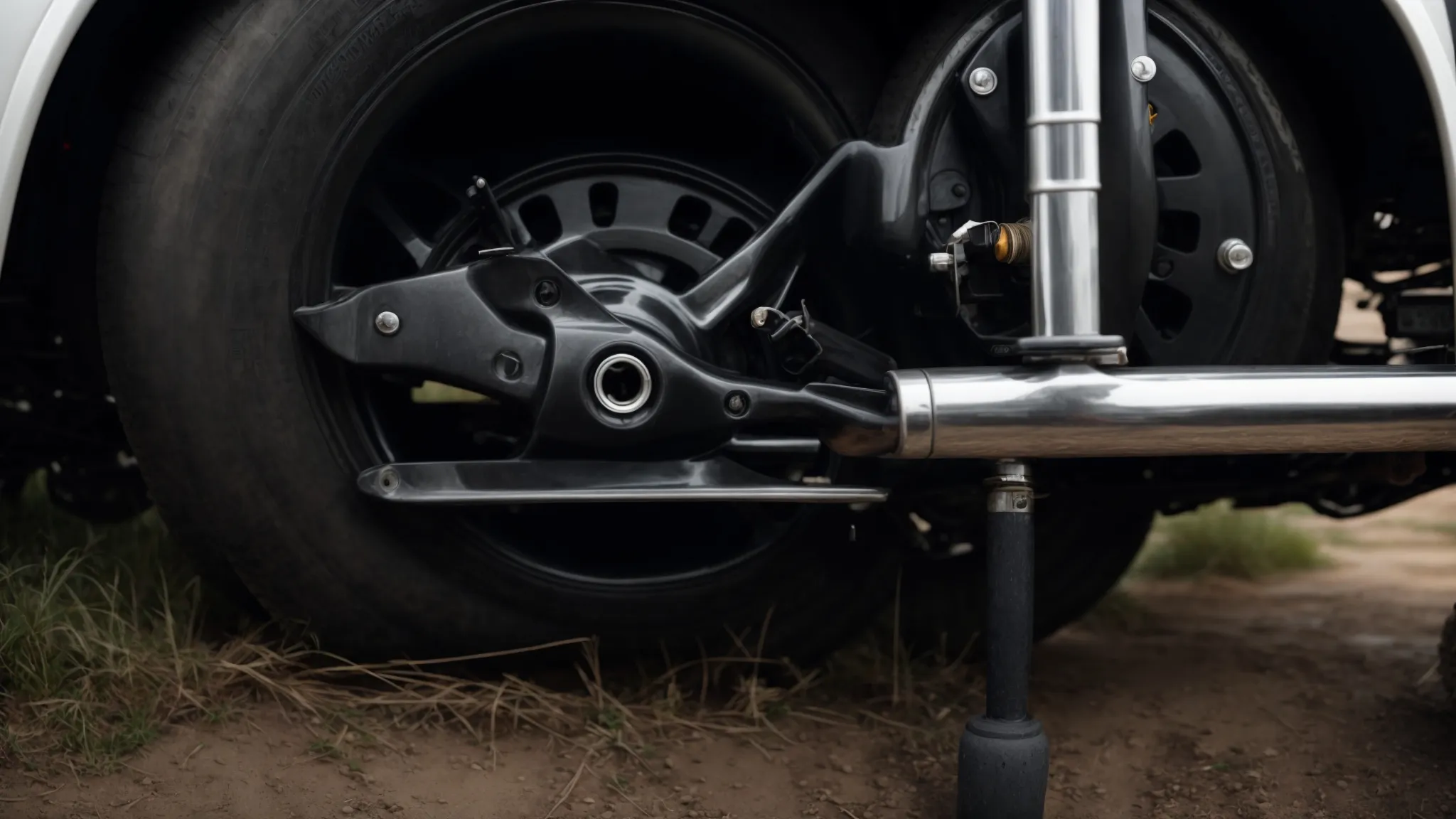
Peeling back the layers of trailer suspension kits reveals a world where each component plays a role as vital as the cogs in a clock, ensuring that our travels are not only efficient but safe.
At the heart of this intricate system lie the springs, our valiant warriors against the jolts and jabs of the road.
These springs absorb shock with the grace of an experienced boxer, turning potential disasters into mere whispers beneath our cargo.
Meanwhile, the dampers stand as our vigilant sentinels, tasked with the crucial job of stabilizing the load.
These unsung heroes work in the shadows, ensuring that the harmony between agility and safety is never disturbed, no matter the turbulence encountered en route.
Understanding these components is not just about dissecting a trailer’s anatomy; it’s about recognizing the guardians of our cargo’s tranquility.
The Role of Springs in Absorbing Road Shock
As I delve deeper into the heart of what makes trailer suspension systems tick, the role of springs in absorbing road shock emerges as a crucial aspect of the narrative. These components, akin to the limbs of an athlete, flex and stretch to cushion the blows delivered by uneven terrains: a testament to their importance in safeguarding our haul.
- Understanding the Components of a Trailer Suspension Kit
- The Role of Springs in Absorbing Road Shock
In the journey of ensuring the safety of both trailer and cargo, springs act as the silent guardians against the chaos of the roads. Their ability to absorb shock not only preserves the integrity of the trailer itself but also ensures that the precious load it carries remains undisturbed, proving their indispensable role in the anatomy of trailer suspension kits.
Importance of Dampers for Stabilizing the Load
The journey of mastering trailer stability finds its unsung hero in dampers, those vigilant sentinels that stand on the front lines. It’s as though they dance a delicate ballet, balancing the load with the precision of a tightrope walker, preventing the trailer from swaying perilously on wind-swept roads or during sharp turns. Their role is a testament to the art and science of safe hauling, ensuring that each journey ends as smoothly as it began.
In the tapestry of trailer suspension kit components, dampers are akin to the keystone of an arch, silently pivotal. They react with agility, adjusting the trailer’s response to road irregularities, mitigating the risk of vehicular ballet turning into unchecked chaos. Their presence is a comforting whisper in the ear of those of us dedicated to the safe transport of goods across the vast and varied landscapes of Australia, promising steadiness in the face of turbulence.
Now that we’ve uncovered the mysteries behind the trailer suspension kit, let’s roll up our sleeves. It’s time to dive into the thrilling world of DIY installation with gusto and flair!
Installation Tips for DIY Enthusiasts on Trailer Suspension Kits
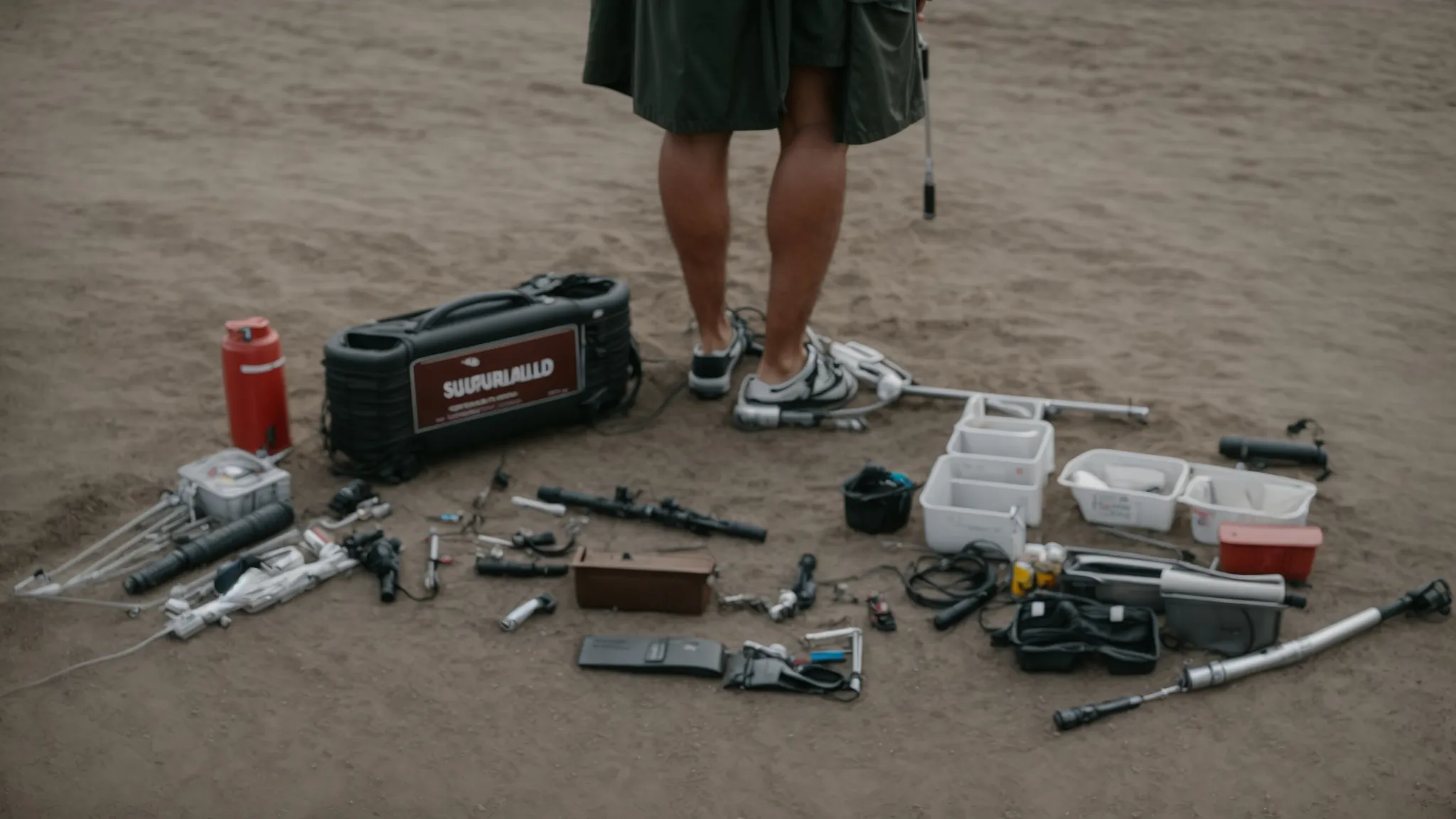
Stepping into the realm of Do-It-Yourself land, where ambition and skill meet the iron and steel of trailer maintenance, embarking on the adventure of installing a suspension kit on your own is nothing short of a knight’s quest.
Armed with determination and the right tools, this chapter unfolds with practical pearls of wisdom for those brave enough to tackle the installation of trailer suspension kits themselves.
From gathering all necessary tools and equipment beforehand to meticulously following the manufacturer’s guidelines for proper installation, the path is laid with crucial steps to ensure the safety of your noble steed on the open road.
Let’s delve into the essential preparation and adherence to guidelines that transform this daunting task into a tale of triumph.
Gather All Necessary Tools and Equipment Beforehand
Before the first bolt is fastened or the initial adjustment made, my journey begins in the quiet before the storm – the preparation phase. Ensuring that each tool and piece of equipment is laid out before me, like a general surveying the battlefield, is crucial. This preparation acts as the fortress foundation for the endeavor ahead, reassuring me that no unexpected foe, in the form of missing equipment, will derail my mission.
Securing the correct tools is akin to gathering an elite cadre of knights, each skilled in their particular domain. The quest for installing trailer suspension kits demands not only wrenches and sockets but also an unwavering attention to detail. I meticulously confirm that I possess everything necessary – from the humble screwdriver to the specialized torque wrench – ensuring that I am wholly equipped to begin the noble endeavor of securing my trailer’s suspension.
Follow Manufacturer Guidelines to Ensure Proper Installation
In my quest to ensure the safety and reliability of my DIY trailer suspension system, adhering to the manufacturer’s guidelines isn’t just recommended; it’s imperative. These guidelines are the map that leads me through the forest of installation, promising safe passage and minimizing the risk of error.
As I stand at the threshold of beginning this important task, I recognize that these guidelines are born out of extensive testing and experience. They are the wise mentors guiding my every step, ensuring that each component, from the dual trailer axles to the trailer suspension kits, marries perfectly with its counterpart, safeguarding against the perils of misadventure on the open road.
- Gather all necessary tools and equipment beforehand.
- Strictly follow the manufacturer’s guidelines for proper installation.
Ready to elevate your ride to uncharted terrains of safety and reliability? Journey with us as we shift gears into upgrading your trailer’s suspension for the ultimate peace of mind.
Upgrading Your Existing Trailer Suspension for Greater Safety
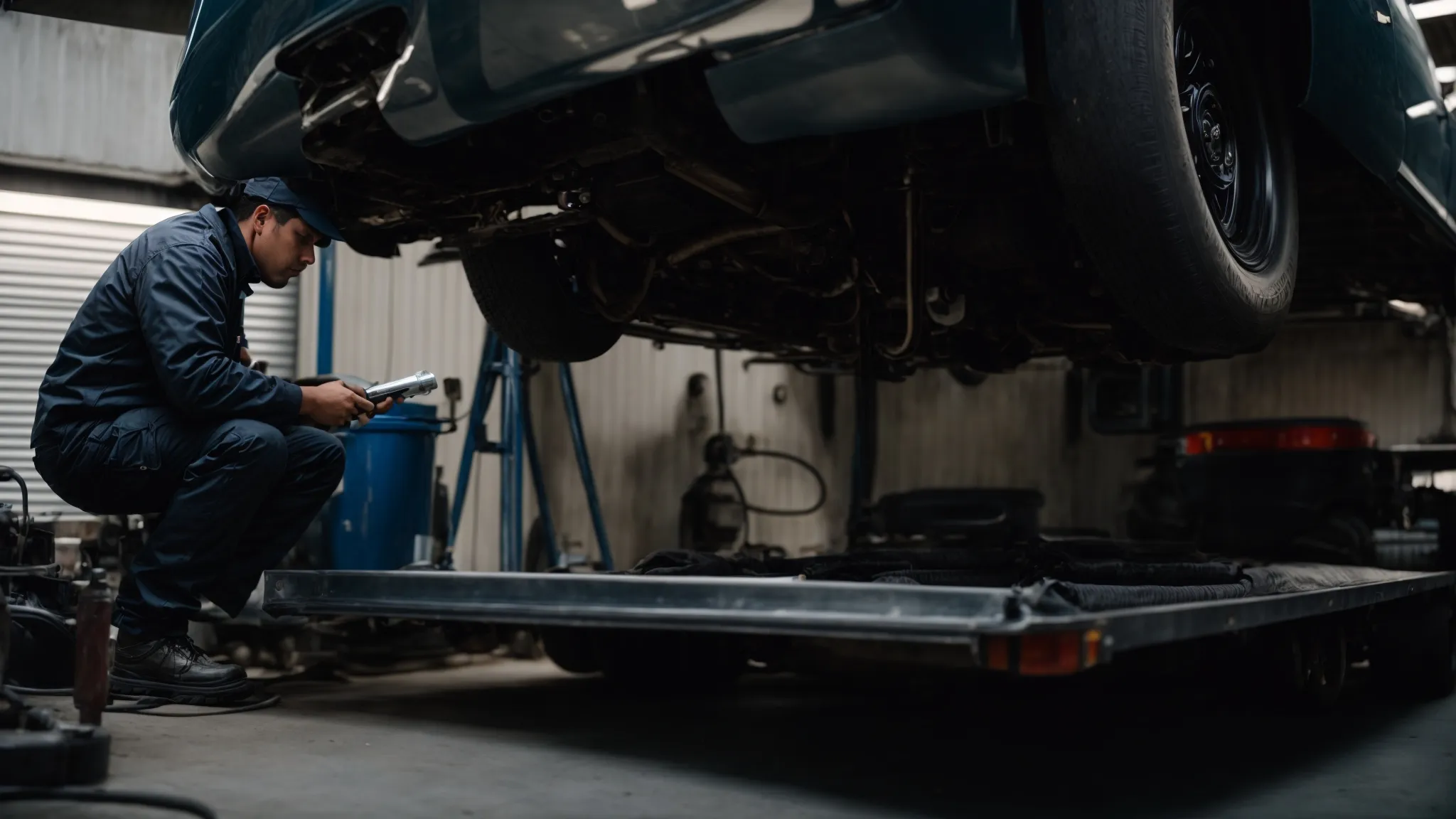
Embarking on the endeavor to enhance the safety of my trailer, I find myself at a critical junction—deciding when and how to upgrade the heart of its stability: the suspension system.
Recognizing the signs of wear and the subtle indications of performance decline becomes my first charge, a mission to ensure the enduring reliability of my travels.
Yet, this endeavor extends beyond mere assessment; it beckons me to seek out and select high-quality replacement parts that promise not just restoration, but a transformation towards lasting resilience.
This pursuit is more than maintenance; it’s an investment in the uninterrupted journey of safe hauling, where longevity and performance converge in the symphony of road-ready assurance.
Assessing When to Upgrade Based on Wear and Performance Issues
Assessing when to embark on the quest for upgrading trailer suspension systems necessitates a keen eye on the signs of wear and the subtle yet telling performance issues: indicators that whisper the need for change. It’s through this vigilance that I ensure the heart of my trailer’s stability continues to beat with unwavering reliability, safeguarding my cargo and journey against the unpredictable demands of the open road.
- Recognize the signs of wear and performance decline.
- Embrace the pursuit of high-quality replacement parts for an upgrade.
- Turn maintenance into a transformative journey for greater resilience.
Initiating this upgrade not only breathes new life into my trailer but also renews my confidence in its ability to safely haul across the diverse terrains of Australia. This transition, guided by an assessment of wear and performance, marks a chapter of proactive safety measures, ensuring that each journey forward is underpinned by a foundation of uncompromised stability and reliability.
Selecting High-Quality Replacement Parts for Longevity
In my quest for enhancing the robustness and reliability of my trailer’s journey, selecting high-quality replacement parts stands as a beacon of wisdom. This pivotal decision is not just about restoring function; it’s an investment in the longevity and safety of every mile traveled.
Understanding that each component of the trailer suspension kits, from tandem axle trailer kits to dual axle trailer kit options, plays a critical role in the symphony of stability, I am meticulous in choosing parts that promise durability. It’s through this careful selection that my trailer is transformed, not just refurbished, ensuring it’s equipped to face the challenges of Australia’s varied terrains with unwavering confidence.
The leap from upgrading to meticulously maintaining your trailer’s suspension opens a new chapter of adventure and longevity. Let’s steer into the essential maintenance tips that promise to keep your journey smooth and your trailer steadfast.
Maintenance Advice to Extend the Life of Your Suspensions
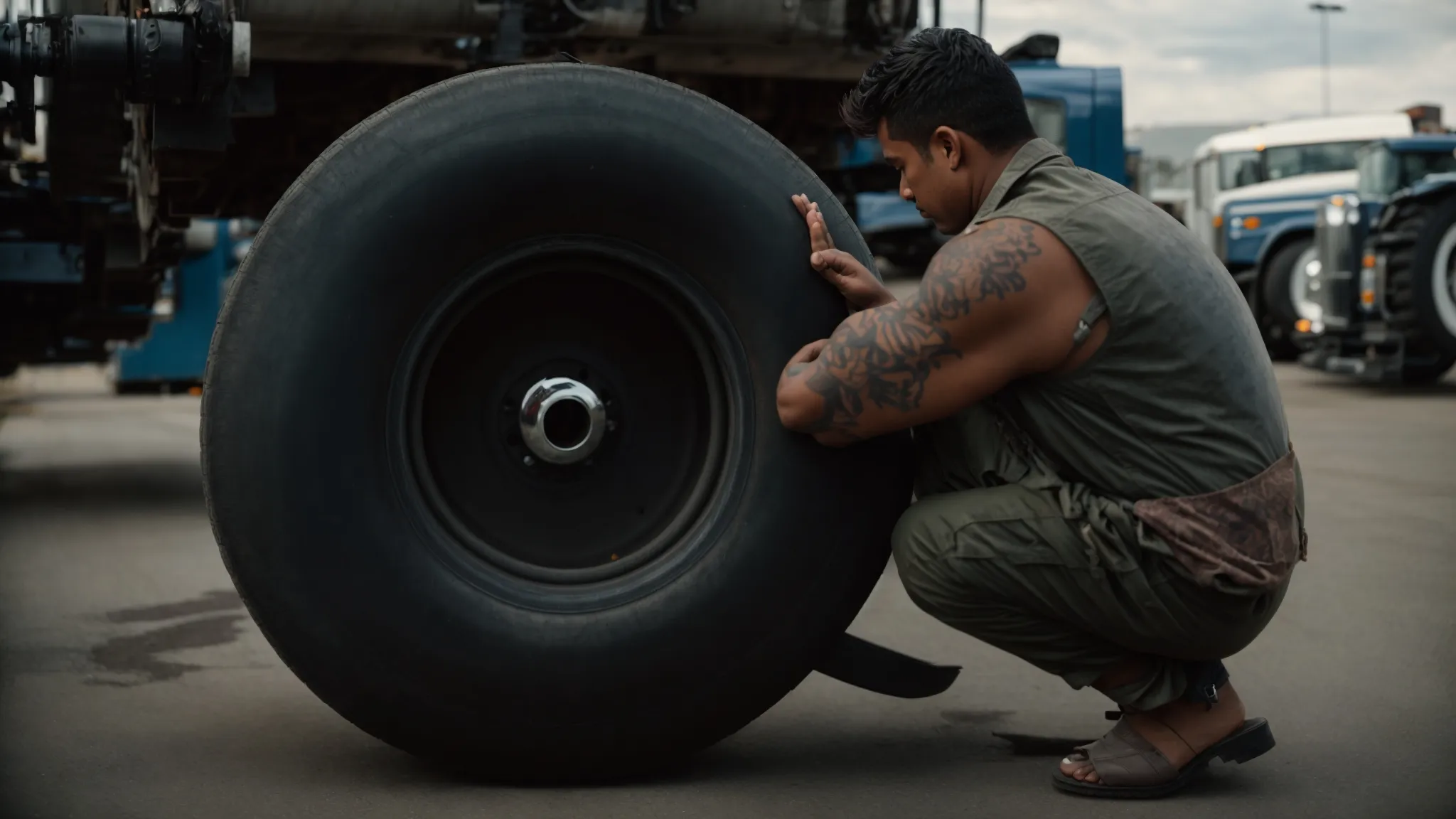
Maintaining the integrity of my trailer’s suspension system is akin to safeguarding the very heart of my hauling capabilities: it ensures every journey’s success and safety. Rigorous attention to maintenance not only extends the life of the suspension but acts as a vigilant guard against the unforeseen challenges that roads may present.
- Regular inspections to catch and address issues early
- Lubrication of moving parts to reduce wear and tear
- Timely replacement of worn components to maintain optimal performance
- Checking and adjusting tire pressure for even distribution of load
Regular inspections stand out as my first line of defense: identifying potential problems before they evolve into serious concerns. This proactive approach allows me to address issues early, preventing minor wear from escalating into significant, costly repairs.
Ensuring that all moving parts within the suspension are well lubricated introduces a layer of protection against the ravages of wear and tear. By reducing friction, I preserve the smooth operation and extend the lifespan of these crucial components.
A commitment to replacing worn or damaged parts without delay ensures that my trailer’s performance is not compromised. This timely intervention maintains the harmony of the suspension system, keeping it in optimal condition to face the rigors of the road.
Lastly, I ensure the longevity and efficiency of my suspension system by regularly checking and adjusting tire pressure. This simple yet critical task supports even weight distribution across the trailer, mitigating undue stress on the suspension and fostering a stable, smooth ride.
Conclusion
In conclusion, selecting the right trailer suspension kit is paramount to ensuring safe and reliable hauling across varied terrains.
Understanding the load capacity and intended use of your trailer guides the choice between robust leaf spring systems and adaptable air ride suspensions.
Essential components like springs and dampers play critical roles in absorbing road shocks and stabilizing the load, ensuring the safety of both trailer and cargo.
DIY enthusiasts must prepare meticulously and adhere to manufacturer guidelines during installation to maintain integrity.
Upgrading suspension systems in response to wear and performance decline, choosing high-quality replacement parts, and dedicating oneself to regular maintenance are vital steps towards enhancing durability and safety.
In essence, investing in essential trailer suspension kits and their upkeep is a proactive measure that significantly contributes to the uninterrupted journey of safe hauling.
Author
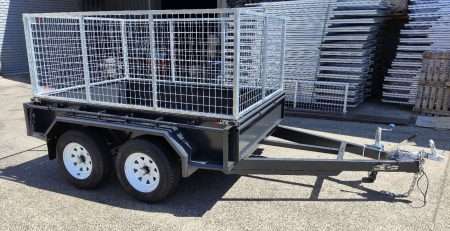
How to Mount a Spare Tire on Your Trailer: A Simple Step-by-Step Guide
Trailer service centers receive over 1 million phone calls and 1.3 million emails each year about trailer maintenance problems....

How to Fix RV Roof Leaks: Simple Roof Leak Detection Guide for Beginners
Did you know DIY RV roof repairs can cost under $50? But undetected leaks could lead to substantially higher repair...

Starting a Food Truck Business in Australia: From Trailer Selection to Launch
The Australian mobile food market has evolved into a billion-dollar industry. This makes a food truck...
